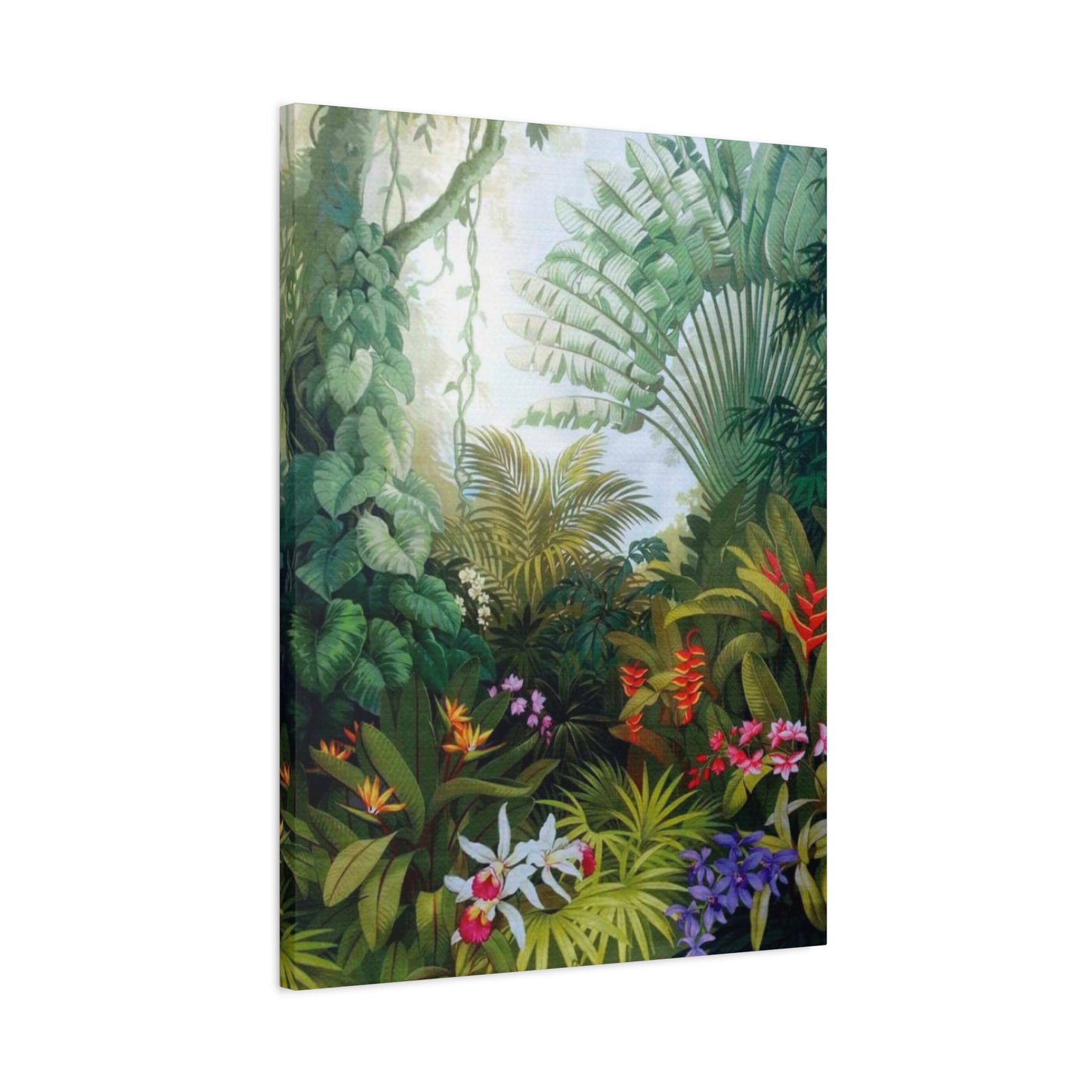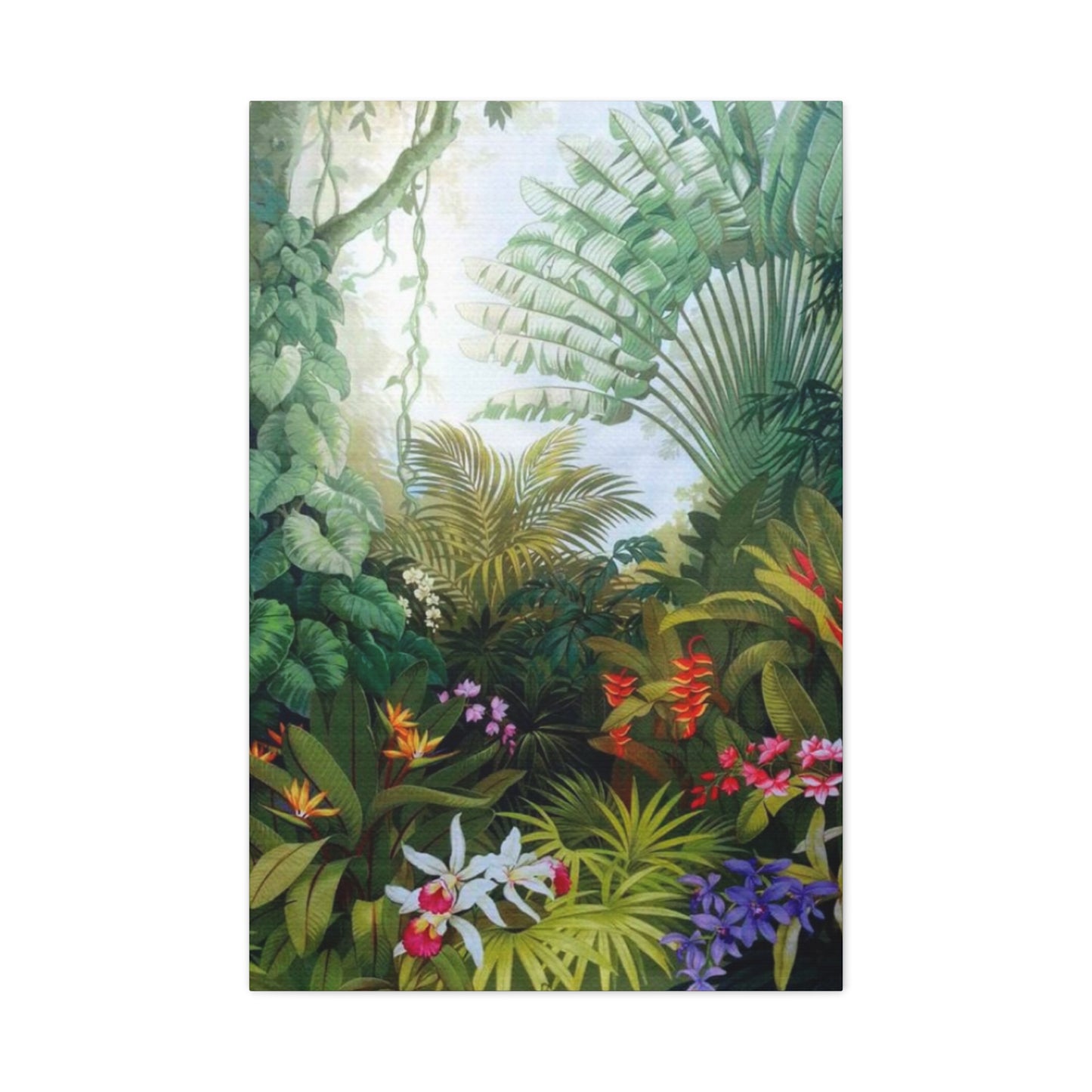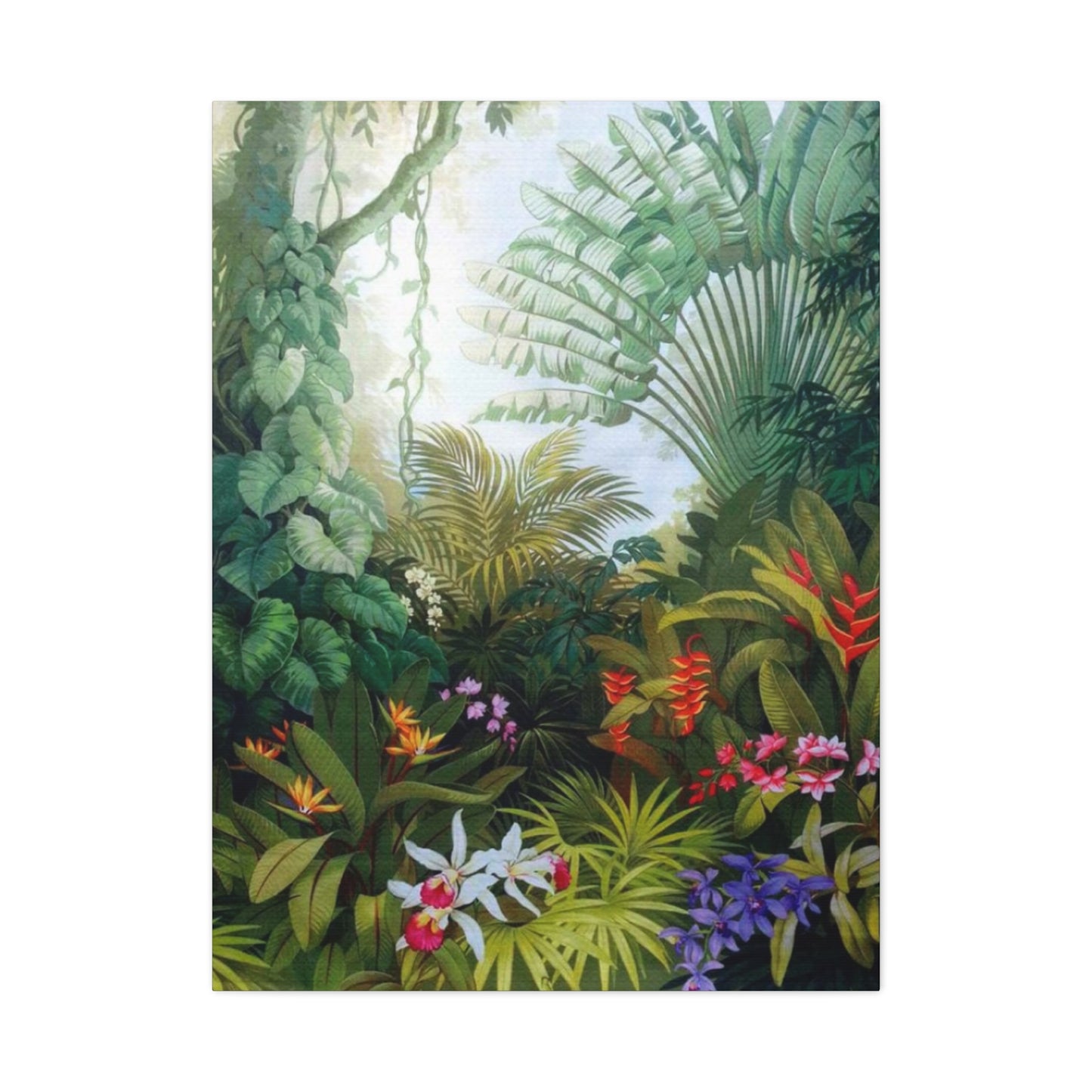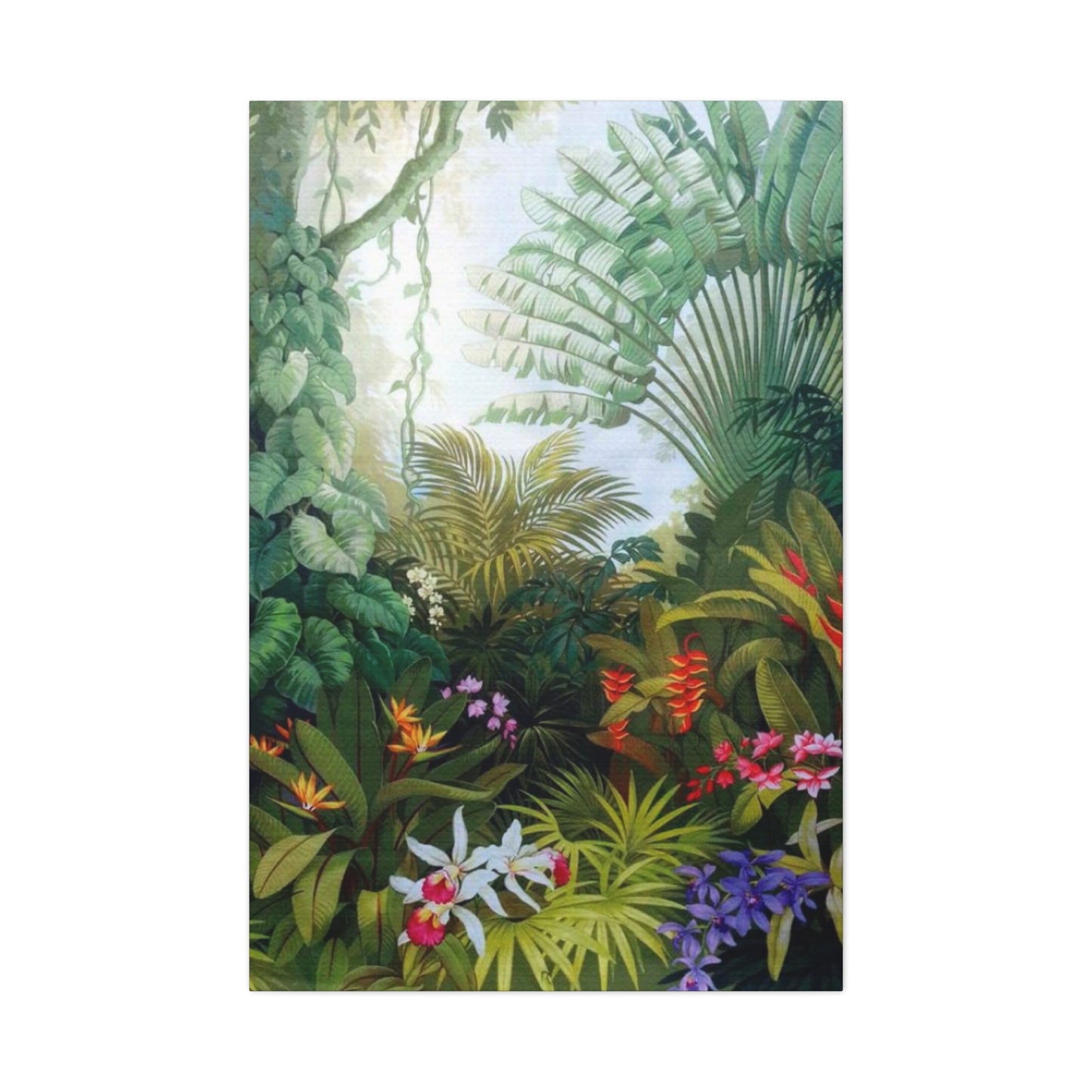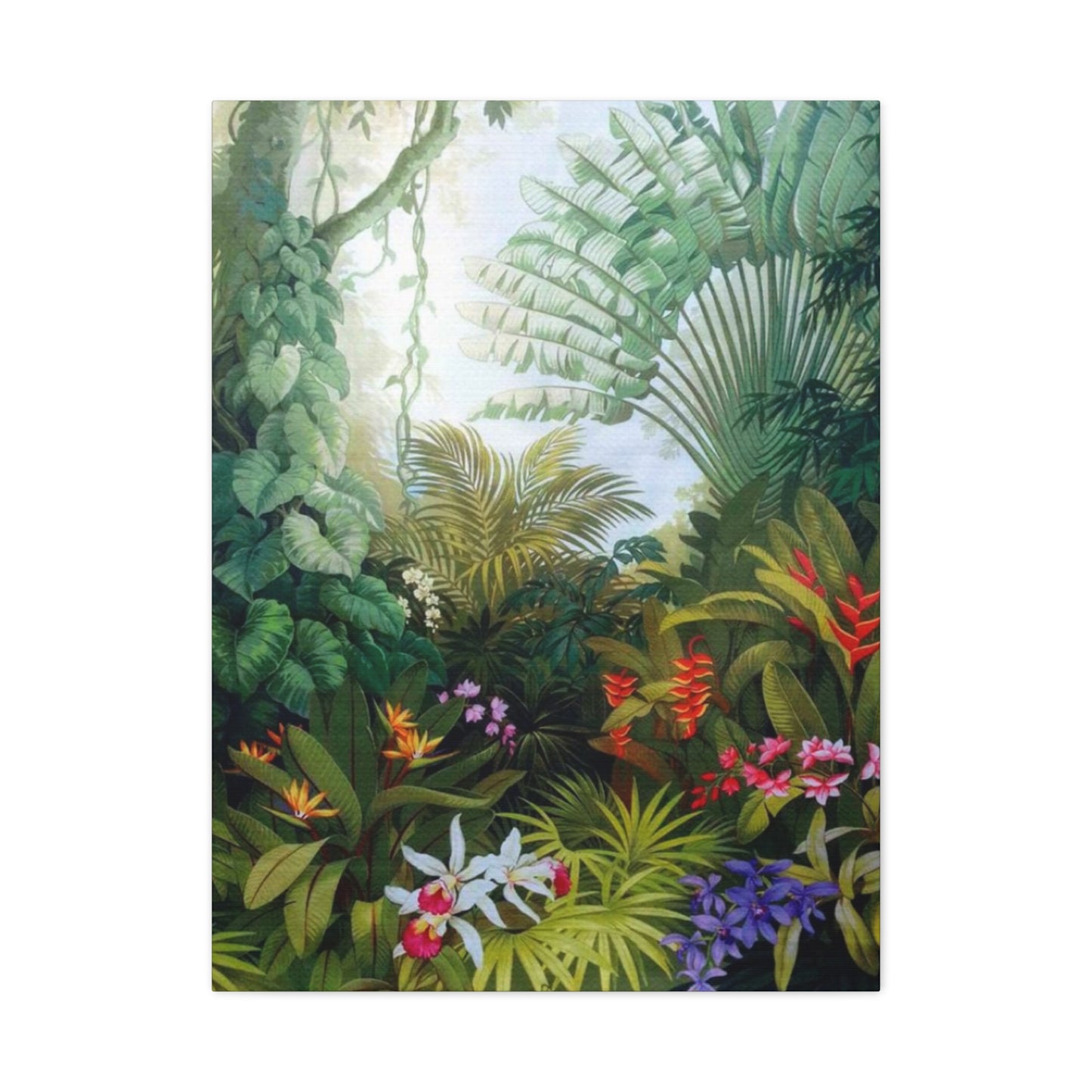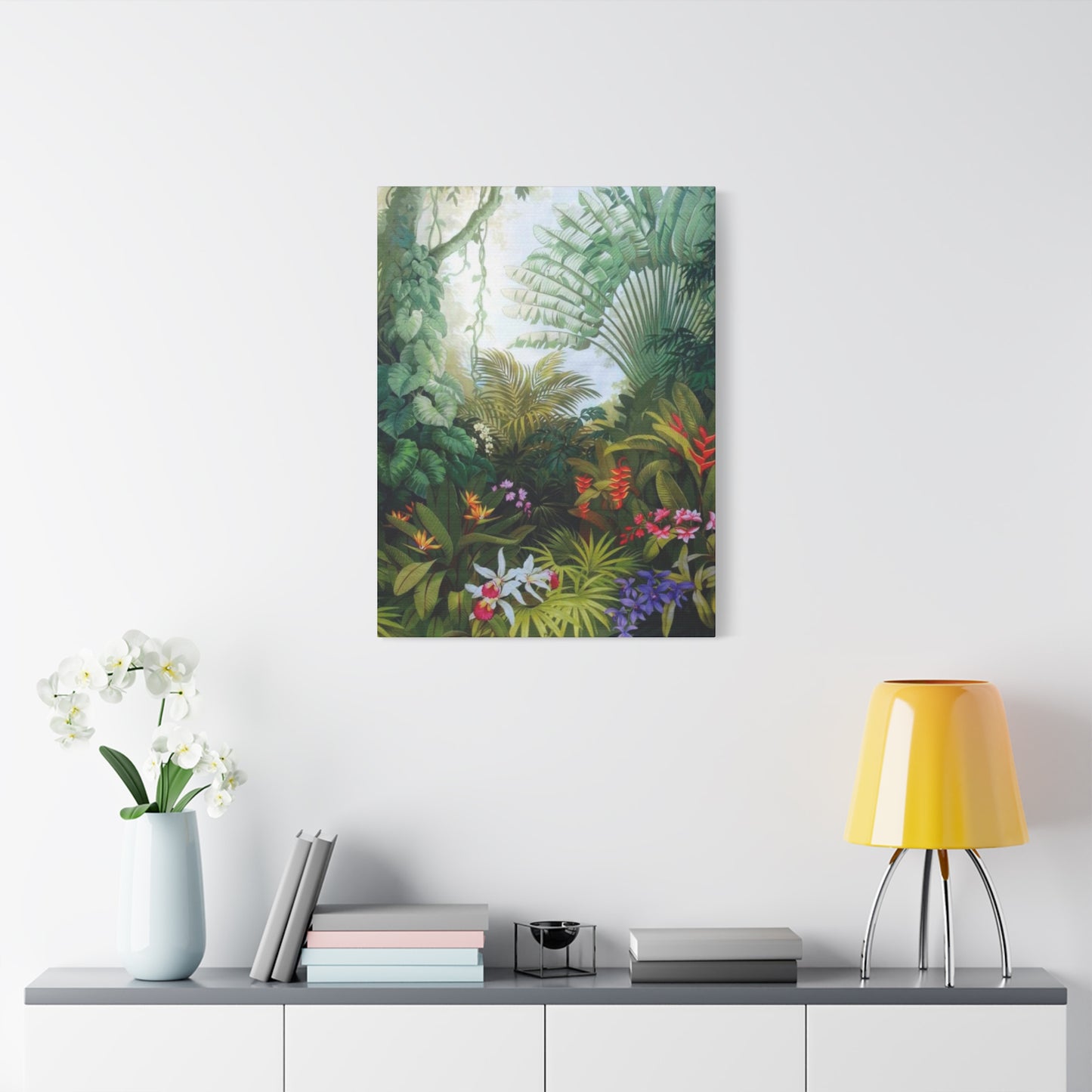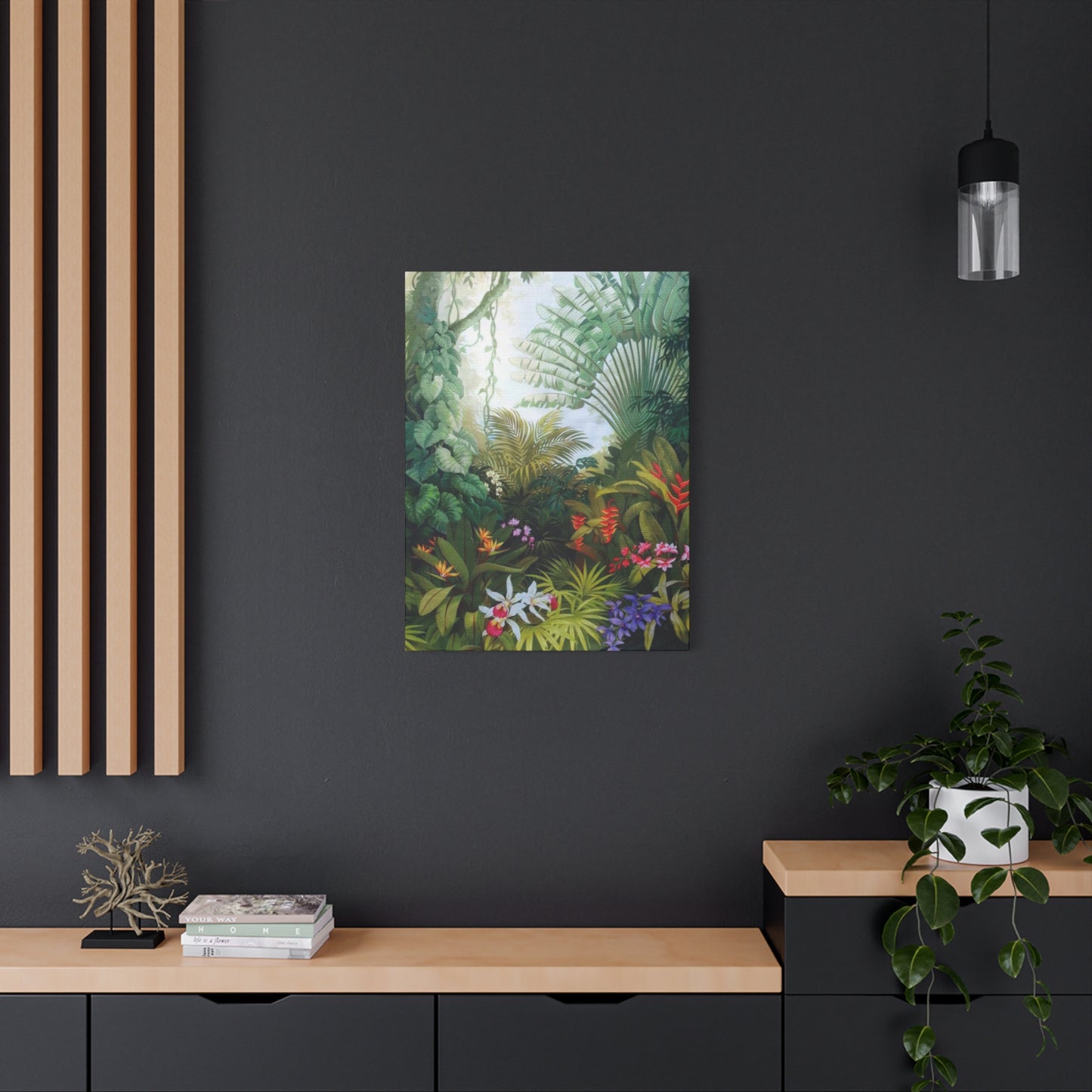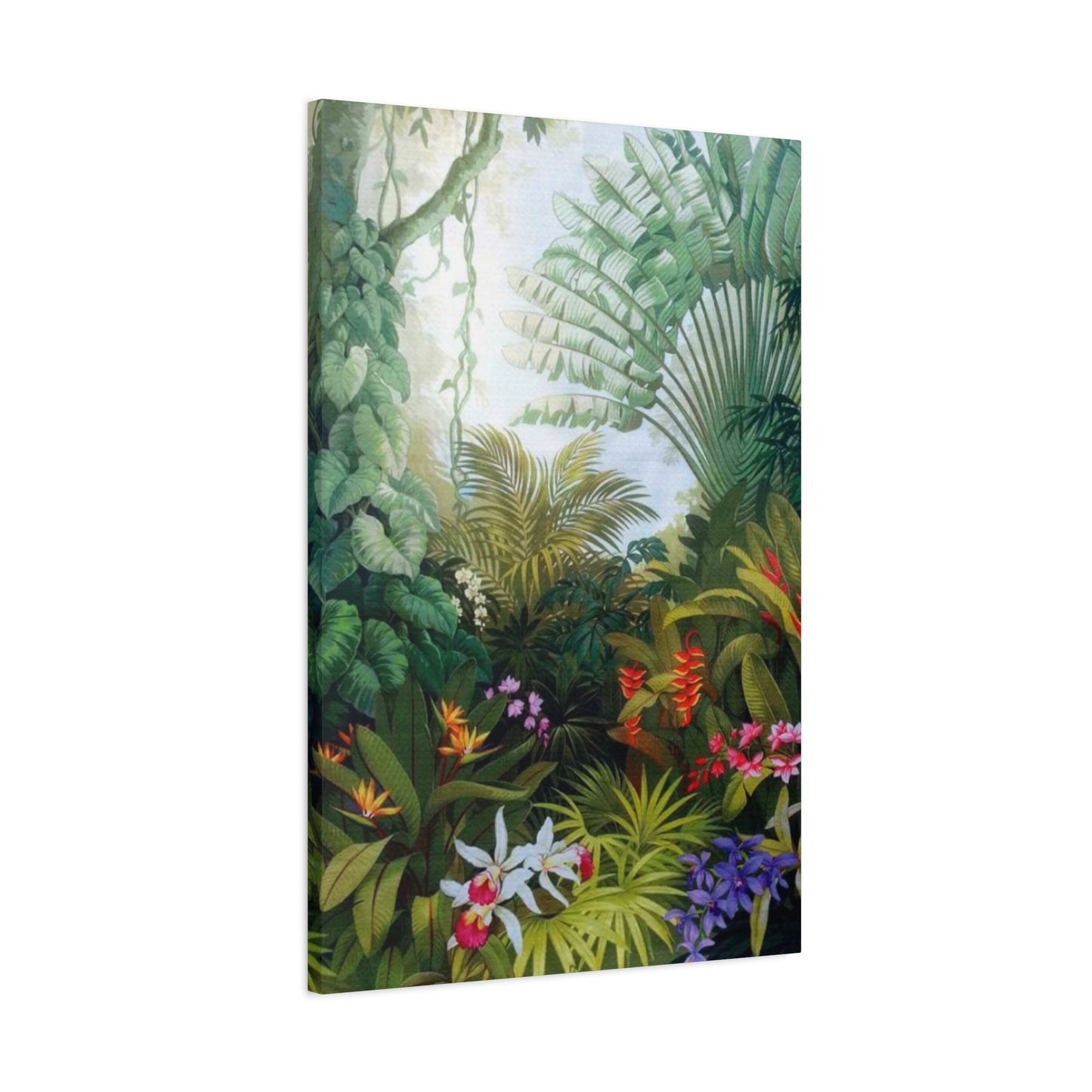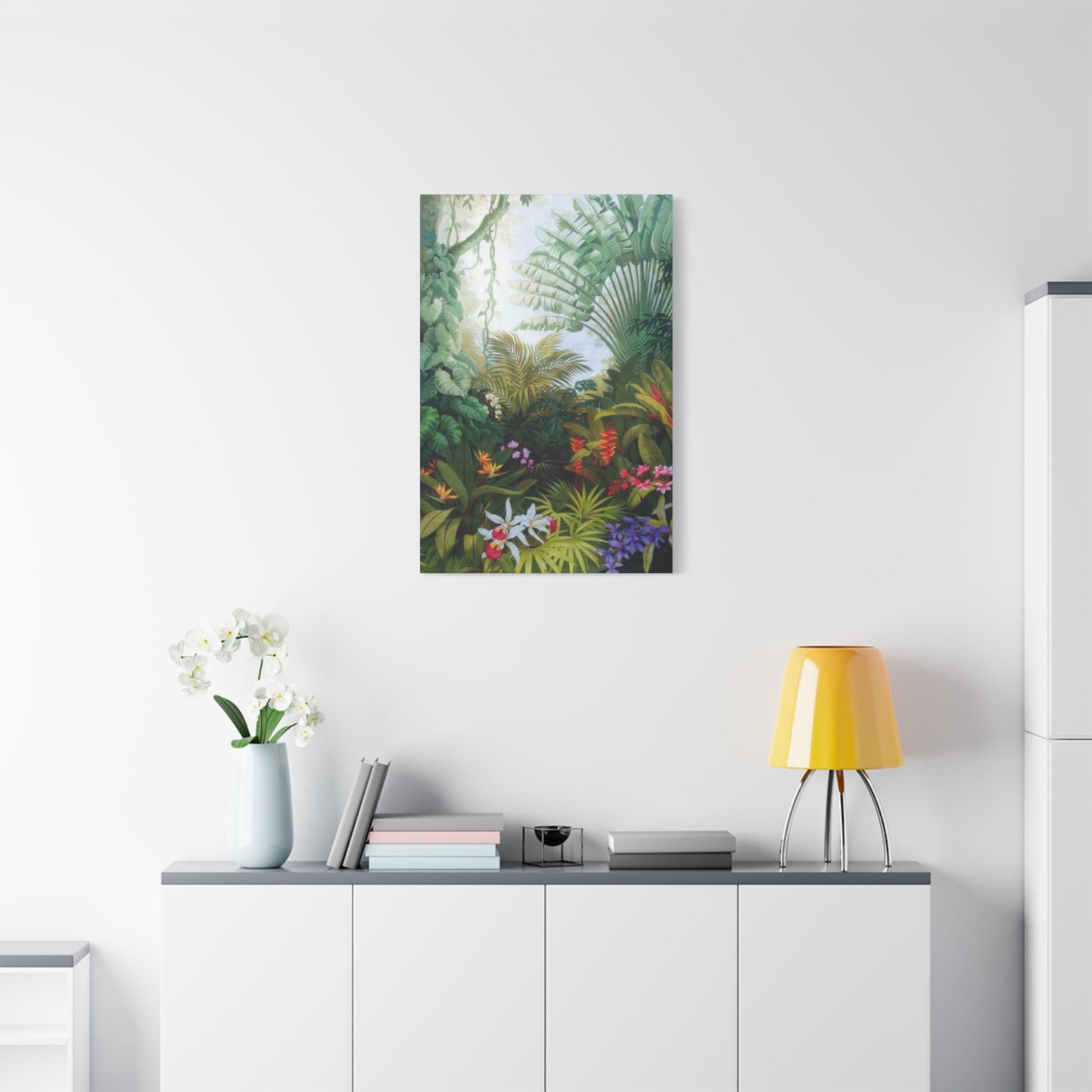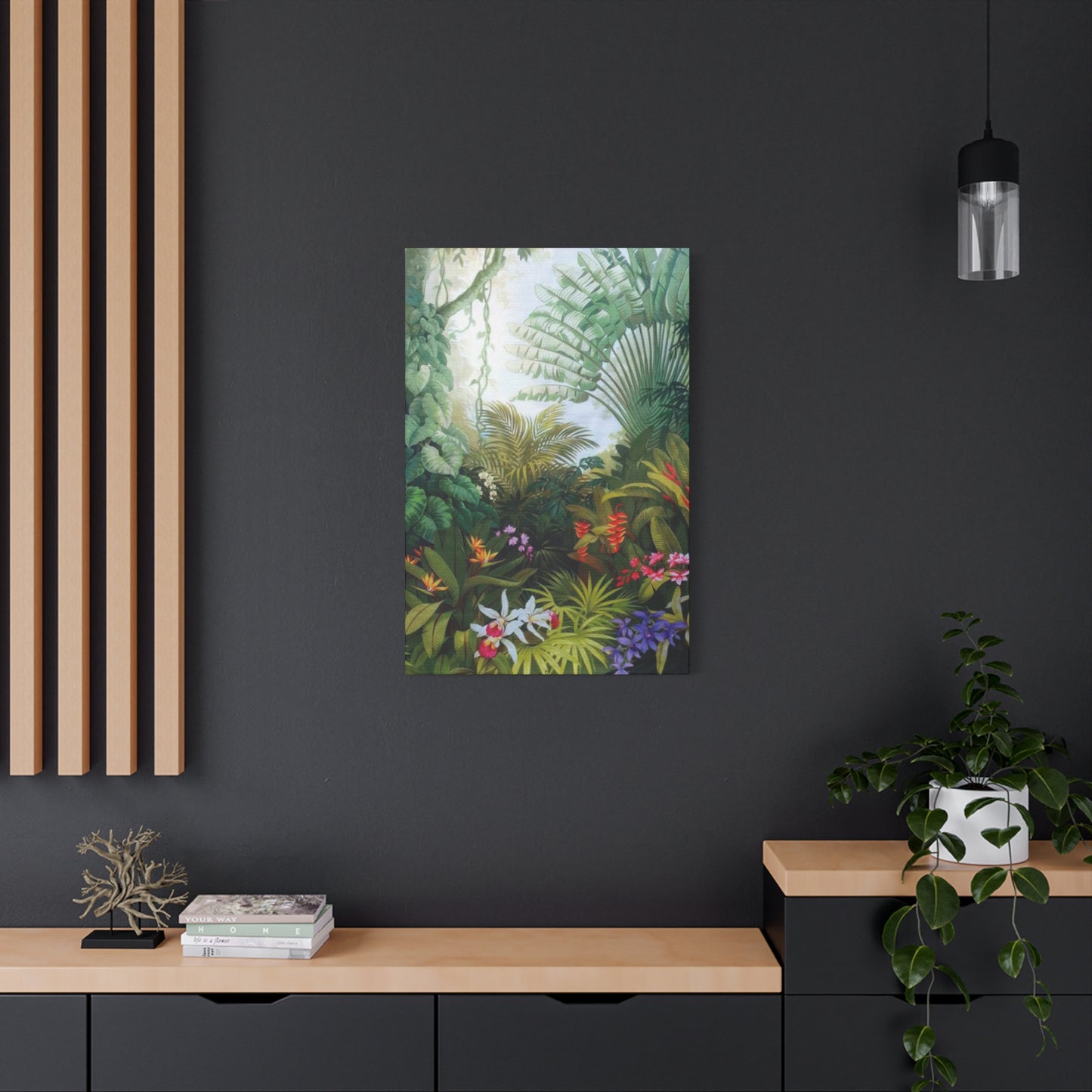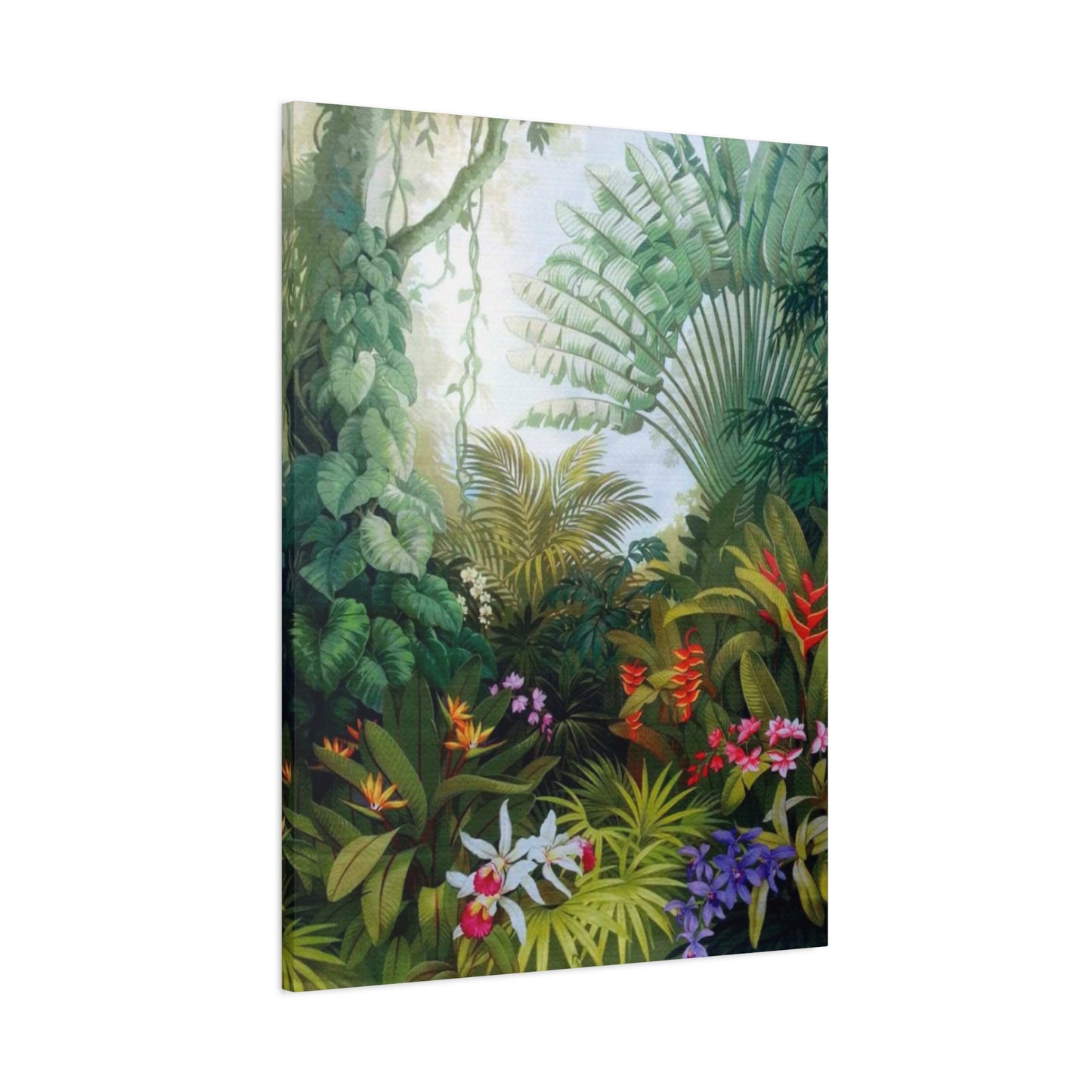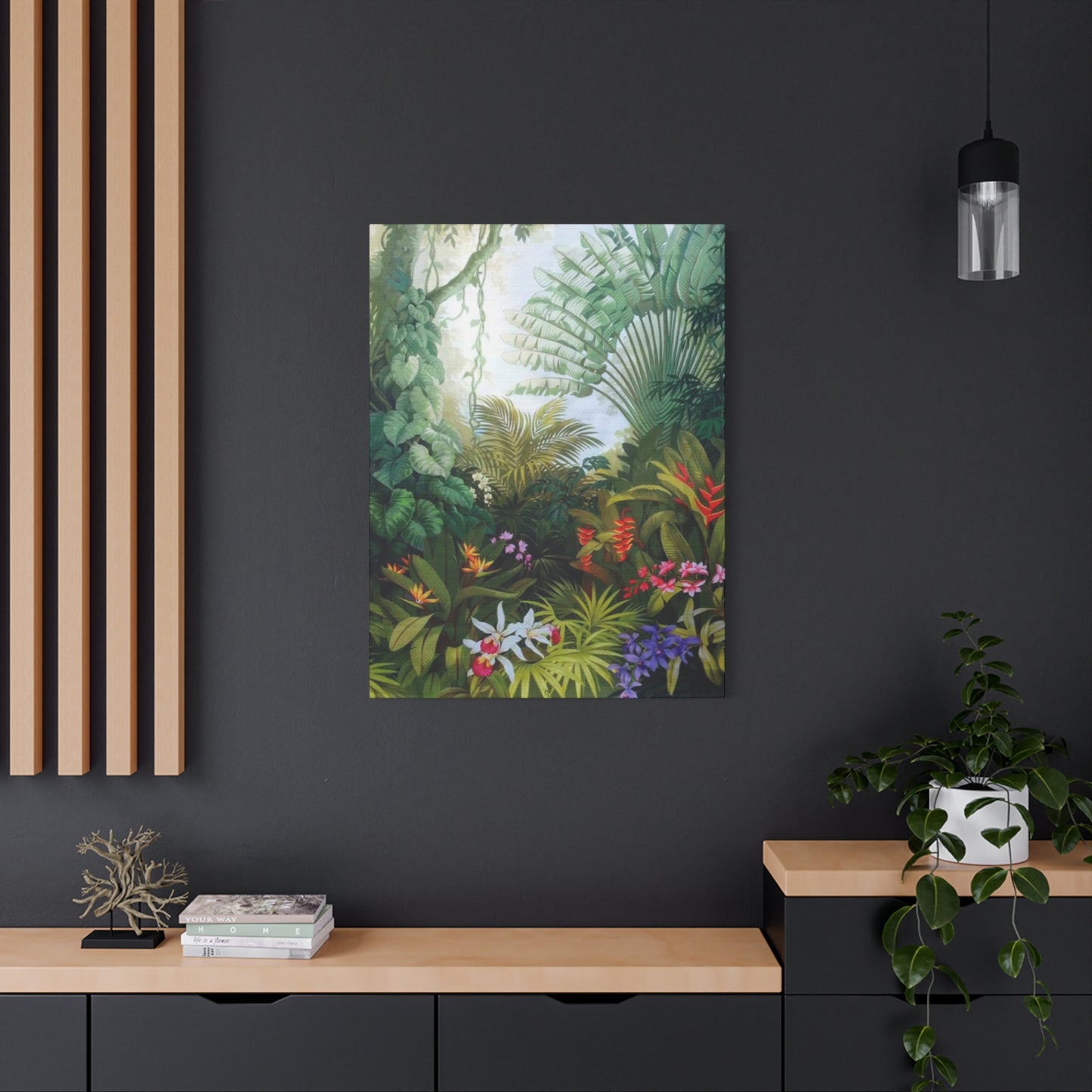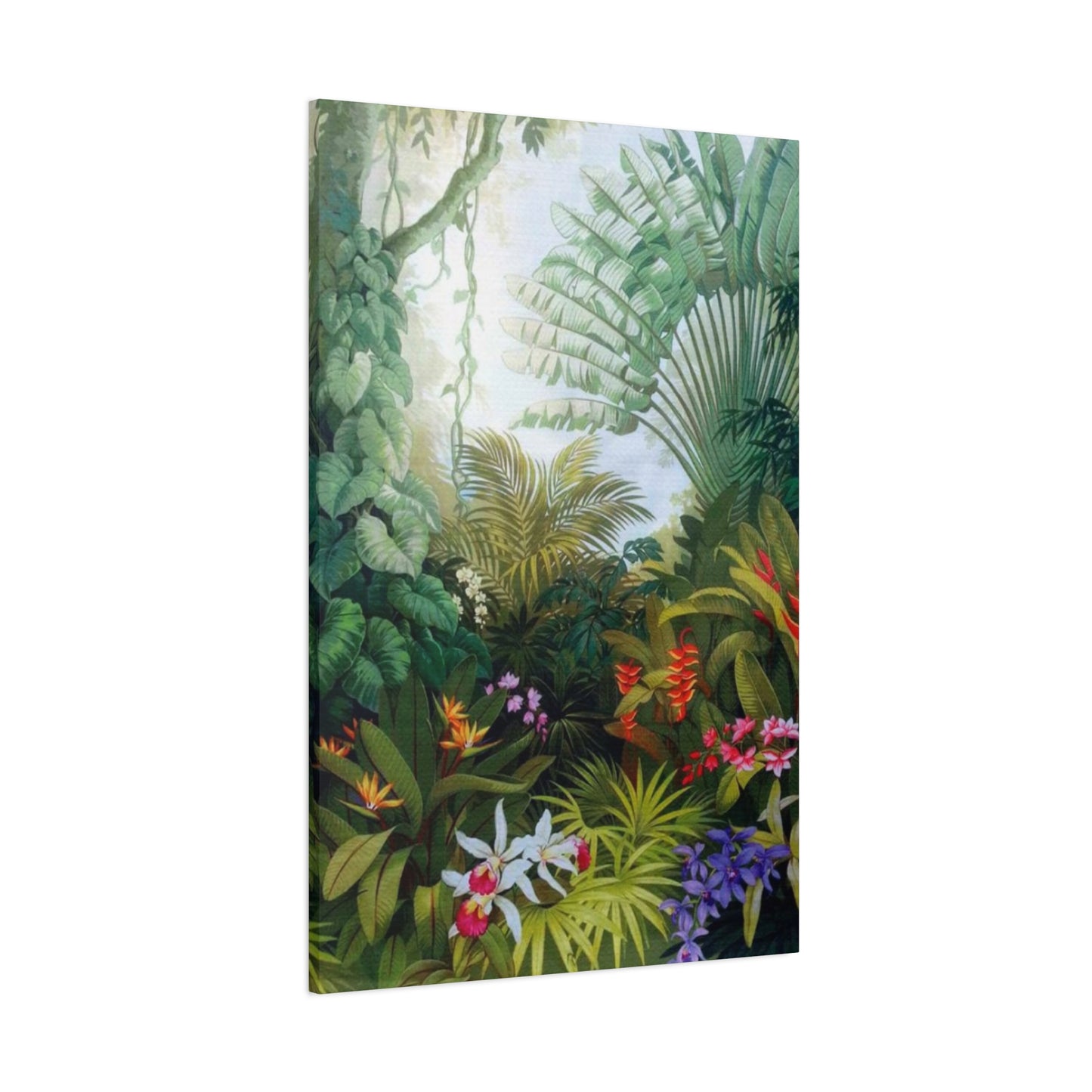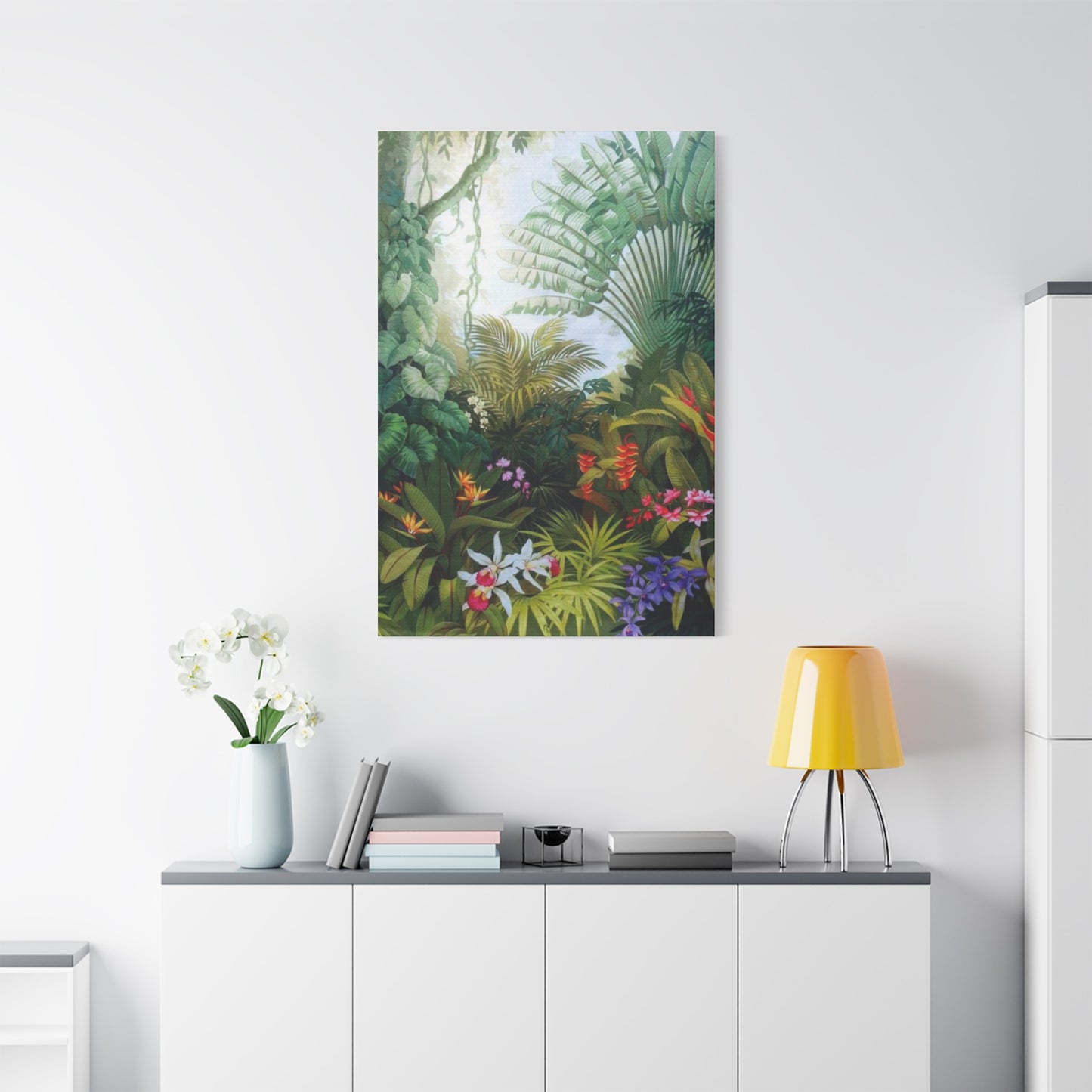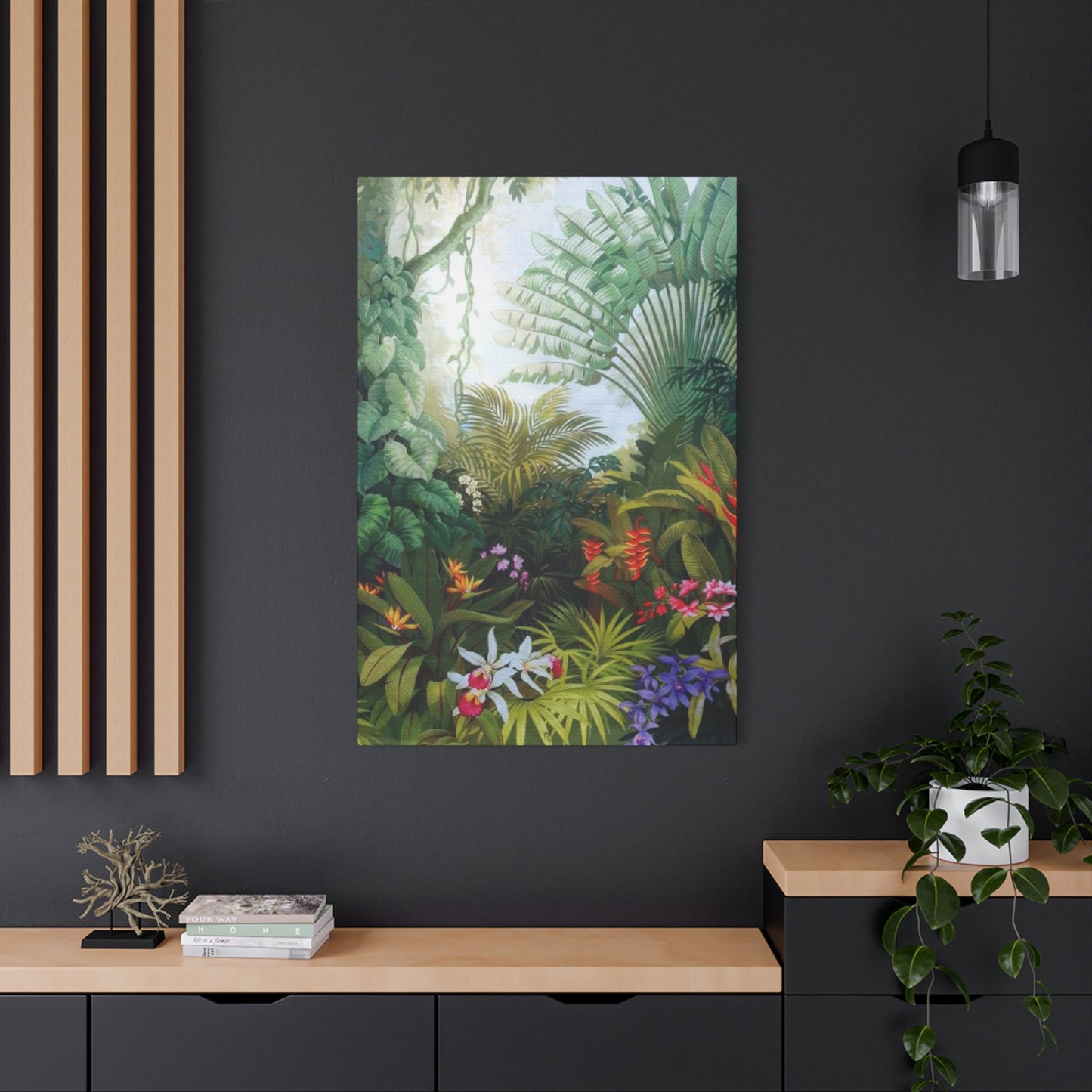Create a Calm, Natural Ambiance with Dense Forest Wall Art
In today's fast-paced world, many homeowners seek ways to reconnect with nature and create tranquil environments within their living areas. Dense forest wall art has emerged as one of the most captivating and versatile decorative elements, offering an instant portal to the serene beauty of woodland landscapes. This comprehensive exploration delves into every aspect of incorporating these magnificent artistic pieces into your home, from understanding their profound symbolism to mastering the art of display and maintenance.
The allure of dense forest imagery transcends mere decoration, tapping into our innate connection with the natural world. These artistic representations serve as more than visual elements; they function as emotional anchors that can transform any room into a sanctuary of peace and reflection. Whether you're drawn to realistic depictions of towering trees and dappled sunlight or prefer abstract interpretations that capture the essence of woodland mystery, dense forest wall art provides endless possibilities for personal expression and environmental enhancement.
As we embark on this journey through the world of forest-themed artwork, we'll explore how these pieces can revolutionize your living environment while addressing practical considerations such as placement, care, and integration with existing decor. The versatility of dense forest themes allows for seamless incorporation into various design styles, from rustic cabin aesthetics to contemporary minimalist approaches.
Framing Concepts for Dense Forest Wall Art
The presentation of dense forest artwork significantly impacts its visual effect and longevity. Selecting appropriate framing options requires careful consideration of both the artwork's characteristics and the intended display environment. Traditional wooden frames often complement forest themes naturally, with rich mahogany, oak, or walnut finishes echoing the warm tones found within the artwork itself. These classic choices provide a timeless appeal that enhances rather than competes with the natural imagery.
Contemporary framing approaches offer exciting alternatives for modern homes. Sleek metal frames in brushed silver, antique bronze, or matte black can create striking contrasts that make forest imagery pop with dramatic intensity. The key lies in balancing the frame's presence with the artwork's natural elements, ensuring that the frame supports rather than overwhelms the piece's inherent beauty.
Matting decisions play an equally crucial role in presentation. Neutral tones such as cream, soft gray, or natural linen provide subtle backgrounds that allow forest colors to shine. However, creative matting choices can enhance specific elements within the artwork. Deep green mats might emphasize the lush foliage, while earth-tone options can highlight forest floor elements and create cohesive color relationships.
The size relationship between frame, mat, and artwork requires careful planning. Generous matting can create breathing room around detailed forest scenes, allowing viewers to appreciate intricate elements without visual crowding. Conversely, minimal matting or direct mounting might suit bold, abstract forest interpretations that benefit from immediate visual impact.
Glass selection affects both protection and presentation. Standard picture glass provides basic protection while maintaining clarity, but premium options offer enhanced benefits. Museum-quality glass eliminates reflections and provides superior UV protection, crucial for preserving the vibrant colors often found in forest artwork. Anti-reflective coatings ensure optimal viewing from various angles, particularly important in rooms with multiple light sources.
Conservation considerations become paramount for valuable or sentimental pieces. Acid-free materials throughout the framing process prevent deterioration over time. Spacers maintain proper distance between glass and artwork, preventing moisture damage and ensuring air circulation. These technical aspects, while less visible, contribute significantly to the artwork's longevity and continued visual appeal.
Custom framing services offer personalized solutions that address specific needs and preferences. Professional framers can recommend optimal combinations based on artwork characteristics, display environment, and budget considerations. Their expertise proves invaluable when dealing with unusual sizes, mixed media pieces, or challenging display situations.
Symbolic Meanings in Dense Forest Paintings
Dense forest imagery carries profound symbolic weight across cultures and artistic traditions. These woodland scenes represent far more than mere landscape documentation; they embody complex metaphorical concepts that resonate deeply with human psychology and spiritual understanding. The forest archetype appears consistently throughout literature, mythology, and visual arts, serving as a powerful symbol for transformation, mystery, and the unconscious mind.
In many cultural contexts, dense forests symbolize the unknown journey of life itself. The winding paths disappearing into shadowy depths mirror our own life experiences, where future outcomes remain hidden while we navigate present challenges. This metaphorical interpretation makes forest artwork particularly meaningful for individuals undergoing significant life transitions or seeking inspiration for personal growth.
The concept of refuge and sanctuary frequently emerges in forest symbolism. Dense tree canopies provide shelter and protection, creating sacred environments removed from external pressures and distractions. This protective quality translates powerfully into home environments, where forest artwork can establish psychological sanctuaries that promote relaxation and mental restoration.
Renewal and regeneration themes permeate forest imagery, reflecting nature's cyclical patterns of growth, decay, and rebirth. These concepts resonate particularly strongly in contemporary society, where individuals often seek balance and renewal amidst demanding lifestyles. Forest artwork serves as visual reminders of natural rhythms and the possibility of continuous personal renewal.
The interplay between light and shadow in forest scenes carries additional symbolic significance. Dappled sunlight filtering through dense canopies represents hope, enlightenment, and spiritual guidance penetrating darkness and uncertainty. This visual metaphor provides comfort and inspiration, making forest artwork especially meaningful during challenging periods.
Ancient wisdom traditions often associate forests with feminine energy and nurturing qualities. The earth-mother archetype finds expression through forest imagery, embodying qualities of fertility, protection, and unconditional support. These associations create particularly strong emotional connections for individuals seeking comfort, stability, or connection with nurturing energies.
The concept of biodiversity within forest ecosystems translates into symbolic representations of community, interdependence, and harmony. Dense forest artwork can remind viewers of their connection to larger systems and the importance of maintaining balance in personal and professional relationships.
Mystery and the unknown maintain strong associations with forest imagery. Dense woods have long represented the boundary between known and unknown realms, making them powerful symbols for exploration, adventure, and personal discovery. This symbolic layer adds depth and intrigue to forest artwork, encouraging contemplation and imagination.
Integrating Dense Forest Prints with Natural Themes
Successfully combining dense forest prints with broader natural themes requires thoughtful planning and artistic sensitivity. The goal involves creating cohesive environments that celebrate nature's diversity while maintaining visual harmony and avoiding overwhelming clutter. This integration process begins with understanding how different natural elements complement and enhance each other.
Water elements provide excellent companions to forest imagery. Artwork featuring streams, rivers, or waterfalls creates dynamic relationships with static forest scenes. The flowing movement suggested by water imagery balances the vertical stability of tree compositions, while shared color palettes in blues, greens, and earth tones ensure visual coherence.
Mountain landscapes offer dramatic backdrops that enhance forest scenes' intimate qualities. Pairing distant mountain views with closer forest details creates layered compositions that suggest depth and environmental complexity. This combination works particularly well in larger rooms where multiple pieces can establish comprehensive natural narratives.
Wildlife imagery integrates naturally with forest themes, as animals represent the living essence of woodland environments. Careful selection ensures that animal subjects feel at home within forest settings. Deer grazing in clearings, birds perched among branches, or bears wandering through undergrowth create believable ecological relationships that enhance both subject matters.
Botanical prints and pressed flower displays complement forest artwork by showcasing detailed natural elements that might be found within woodland environments. Ferns, wildflowers, and tree leaves provide intimate connections to forest ecosystems while adding textural variety and scientific interest to display arrangements.
Seasonal variations offer opportunities to rotate complementary pieces throughout the year. Spring forest scenes pair beautifully with cherry blossom prints, while autumn woodland imagery harmonizes with harvest-themed artwork. This rotation keeps displays fresh and connects indoor environments with outdoor seasonal changes.
Rock and mineral specimens provide three-dimensional elements that ground forest imagery in natural reality. Carefully selected stones, crystals, or geodes can anchor artwork displays while introducing textural contrasts and earthy color variations. These elements work particularly well on floating shelves or display ledges beneath framed pieces.
Natural fiber textiles enhance the organic feeling of forest-themed displays. Jute, linen, or hemp fabrics in wall hangings or throw pillows echo the natural textures suggested by forest imagery. These textile elements soften hard surfaces and create tactile connections to natural environments.
Lighting considerations become crucial when integrating multiple natural elements. Warm, diffused lighting mimics forest environments where sunlight filters through leaves, creating gentle illumination that enhances both artwork and complementary elements without creating harsh contrasts or unwanted reflections.
Notable Artists Specializing in Dense Forest Art
The realm of dense forest artwork encompasses contributions from numerous talented artists who have dedicated their careers to capturing woodland majesty. These creative individuals bring unique perspectives and techniques to forest representation, enriching the available selection for collectors and enthusiasts seeking authentic artistic expression.
Contemporary landscape painters continue advancing traditional forest representation through innovative approaches and modern techniques. Many artists combine plein air observation with studio refinement, creating works that capture both immediate environmental impressions and carefully considered compositional elements. Their dedication to authentic representation produces artwork that resonates with viewers seeking genuine connections to natural environments.
Digital artists have revolutionized forest artwork through sophisticated software capabilities that allow for unprecedented detail and atmospheric effects. These technological tools enable artists to create hyper-realistic forest scenes or explore abstract interpretations that would be impossible through traditional media. The resulting works often feature enhanced color saturation, dramatic lighting effects, and intricate detail levels that captivate contemporary audiences.
Photography specialists focusing on forest environments contribute significantly to available artwork options. These professionals possess technical expertise and artistic vision necessary to capture forest environments under optimal conditions. Their work often reveals forest details and perspectives that casual observers might overlook, providing educational value alongside aesthetic appeal.
Printmaking artists utilize various techniques to create unique forest interpretations. Woodcut prints offer particularly appropriate media for forest subjects, as the wood medium creates natural connections to forest themes. Lithography and etching techniques allow for subtle tonal variations that effectively capture forest atmospheres and lighting conditions.
Mixed media artists combine multiple materials and techniques to create complex forest representations. These innovative approaches might incorporate natural materials such as bark, leaves, or wood fragments alongside traditional artistic media. The resulting works offer textural richness and authentic natural connections that purely painted or printed pieces cannot achieve.
Sculptural artists working in forest themes contribute three-dimensional perspectives that complement flat artwork. Wood carvers, metal sculptors, and ceramic artists create pieces that capture forest essence through form rather than image. These sculptural elements can enhance forest artwork displays by adding dimensional variety and tactile interest.
Regional artists often possess intimate knowledge of local forest environments, creating artwork that reflects specific geographic characteristics and seasonal variations. Supporting these artists contributes to local art communities while acquiring pieces that capture familiar landscape elements with authentic understanding and emotional connection.
Emerging artists continue expanding forest art boundaries through experimental techniques and fresh perspectives. Social media platforms and online galleries provide unprecedented access to diverse artistic voices, allowing collectors to discover unique forest interpretations that reflect contemporary environmental concerns and artistic innovation.
Abstract Approaches to Dense Forest Wall Art
Abstract interpretation of dense forest themes opens exciting possibilities for artistic expression that transcends literal representation. These stylized approaches capture forest essence through color, form, and composition rather than detailed realistic depiction. Abstract forest art appeals particularly to viewers seeking emotional and atmospheric connections rather than documentary accuracy.
Color abstraction techniques distill forest environments into essential hue relationships. Artists might represent dense foliage through various green tones arranged in organic patterns, suggesting vegetation without depicting individual leaves or branches. These color-focused approaches create strong emotional responses while allowing viewers' imaginations to complete forest imagery based on personal experiences and memories.
Geometric abstraction applies structured compositional elements to forest themes. Vertical lines might suggest tree trunks while horizontal elements represent forest floors or distant horizons. These simplified approaches appeal to contemporary design sensibilities while maintaining clear connections to natural sources. The resulting artwork integrates easily into modern architectural environments.
Textural abstraction emphasizes surface qualities and material characteristics associated with forest environments. Thick paint applications might simulate bark textures, while smooth areas suggest flowing water or dappled light. These tactile approaches invite closer examination and create engaging visual experiences that reward detailed observation.
Movement abstraction captures the dynamic qualities of forest environments through gestural mark-making and flowing compositions. Wind-blown foliage, shifting light patterns, and seasonal changes translate into energetic brushwork and fluid forms. These interpretations convey forest vitality and natural rhythms through purely artistic means.
Light abstraction focuses on illumination qualities unique to forest environments. Artists might explore relationships between bright clearings and shadowy depths through contrasting value patterns. These light-focused approaches often create dramatic visual effects while suggesting the mysterious atmospheric qualities that make forest environments so compelling.
Emotional abstraction interprets psychological responses to forest environments rather than visual appearances. Colors, forms, and compositions reflect feelings of tranquility, mystery, adventure, or spiritual connection associated with woodland experiences. These deeply personal interpretations create artwork that functions as emotional catalysts rather than mere decoration.
Scale abstraction plays with size relationships to create unique forest perspectives. Microscopic details might be enlarged to fill entire canvases, while vast forest panoramas could be reduced to intimate studies. These scale manipulations challenge viewers' expectations while revealing new appreciation for forest complexity.
Mixed media abstraction incorporates actual forest materials into artistic compositions. Bark fragments, pressed leaves, or wood elements might be combined with paint, creating physical connections to forest environments while maintaining abstract compositional approaches. These works offer unique textural qualities and authentic natural connections.
Optimal Locations for Dense Forest Canvas Prints
Strategic placement of dense forest canvas prints maximizes their visual impact while complementing existing architectural and decorative elements. Different rooms present unique opportunities and challenges for forest artwork display, requiring careful consideration of lighting conditions, sight lines, and functional requirements.
Living areas offer prime real estate for forest artwork due to their social nature and extended viewing opportunities. Large forest canvases can serve as focal points above seating arrangements, creating conversation starters while establishing room atmosphere. The relaxing qualities associated with forest imagery make these pieces particularly appropriate for areas dedicated to relaxation and entertainment.
Bedrooms benefit significantly from forest artwork's calming influences. Positioning forest prints where they're visible from bed creates peaceful focal points that support relaxation and sleep quality. However, bedroom lighting conditions often differ from other areas, requiring consideration of how artificial lighting affects artwork appearance during evening hours.
Home offices and study areas gain substantial benefits from forest artwork's stress-reducing qualities. Research suggests that nature imagery can improve concentration and reduce mental fatigue, making forest prints valuable additions to work environments. Positioning artwork within peripheral vision provides subtle natural connections without creating distracting focal points during focused tasks.
Hallways and transitional areas present opportunities to create nature-themed galleries using multiple forest pieces. These typically narrow environments suit vertical forest compositions while allowing for creative grouping arrangements. Proper lighting becomes crucial in these areas to ensure adequate illumination for artwork appreciation.
Dining areas benefit from forest artwork's ability to create intimate, natural atmospheres that enhance social experiences. Forest imagery can soften formal dining environments while providing conversation topics and visual interest. Scale considerations become important in dining areas to ensure artwork doesn't overwhelm the dining experience.
Bathrooms present unique opportunities and challenges for forest artwork placement. The relaxing qualities of forest imagery complement bathing and personal care routines, but humidity and moisture concerns require careful material selection and protective measures. Canvas prints with appropriate protective coatings can successfully withstand bathroom environments.
Kitchen areas often benefit from forest artwork's ability to introduce natural elements into utilitarian environments. However, cooking activities generate heat, moisture, and airborne particles that can affect artwork longevity. Strategic placement away from cooking areas while maintaining visibility provides optimal balance between aesthetic enhancement and practical considerations.
Stairwells offer dramatic opportunities for large forest canvases or gallery arrangements that can be appreciated from multiple levels. The vertical nature of stairwell areas naturally complements forest imagery, while varying viewing angles create dynamic appreciation opportunities as individuals move through the area.
Creative Gift Concepts with Dense Forest Wall Art
Dense forest wall art makes exceptional gifts that demonstrate thoughtfulness while providing lasting value and emotional significance. The universal appeal of natural imagery ensures broad recipient appreciation, while the variety of available styles and price points accommodates different gift-giving situations and budgets.
Housewarming gifts featuring forest artwork help new homeowners establish personal connections with their living environments. Selecting pieces that complement known decorative preferences while introducing natural elements shows consideration for the recipient's taste while encouraging environmental consciousness. Size considerations become important for housewarming gifts, as recipients may have limited wall areas or undetermined decorative plans.
Anniversary gifts incorporating forest themes can symbolize relationship growth and natural harmony. Couples who enjoy outdoor activities or share environmental interests particularly appreciate forest artwork that reflects shared values and experiences. Custom framing with meaningful dates or locations adds personal significance that transforms artwork into cherished keepsakes.
Retirement gifts featuring forest imagery acknowledge life transitions while suggesting peaceful future phases. The contemplative qualities associated with forest environments make these pieces appropriate for individuals entering retirement years. Selecting artwork that reflects recipient interests in hiking, camping, or nature appreciation demonstrates understanding of their passion for outdoor experiences.
Wedding gifts incorporating forest themes can represent new beginnings and natural harmony between partners. Forest artwork with romantic qualities such as filtered sunlight or intimate clearings creates meaningful symbols for couples beginning married life. Group gifting opportunities allow friends and family to contribute to larger, more significant pieces that become treasured marriage mementos.
Graduate gifts featuring forest artwork can symbolize future growth and exploration opportunities. Young adults entering professional careers or advanced education benefit from calming natural imagery in their living areas. Budget-friendly options ensure accessibility while providing graduates with meaningful decorative pieces for new apartments or dormitories.
Holiday gifts incorporating forest themes offer alternatives to traditional seasonal imagery while maintaining natural connections to winter and celebration periods. Forest scenes featuring snow or winter elements provide seasonal relevance while offering year-round display potential. The timeless appeal of forest imagery ensures continued appreciation beyond holiday seasons.
Corporate gifts featuring forest artwork demonstrate environmental consciousness while providing clients and partners with meaningful office decorations. Selecting pieces that complement professional environments while introducing stress-reducing natural elements shows consideration for recipient well-being and work environment quality.
Sympathy gifts incorporating forest imagery can provide comfort through connections to natural cycles of renewal and continuity. The healing qualities associated with natural environments make forest artwork appropriate for individuals experiencing loss or difficult life transitions. Subtle, peaceful forest scenes offer hope and tranquility without overwhelming grieving individuals.
DIY Projects for Dense Forest Wall Art
Creating original dense forest wall art through DIY projects offers rewarding opportunities for personal expression while developing artistic skills and creating unique decorative pieces. These projects range from simple techniques suitable for beginners to complex approaches that challenge experienced crafters and artists.
Photography projects allow individuals to capture personal forest experiences while creating custom artwork for home display. Digital cameras and smartphones provide accessible tools for forest photography, while basic editing software enables enhancement and artistic interpretation. Printing services offer various size and material options that transform personal photographs into professional-quality artwork pieces.
Painting projects accommodate various skill levels and artistic preferences. Acrylic paints provide beginner-friendly media with quick drying times and easy cleanup. Watercolors offer subtle transparency effects perfect for atmospheric forest scenes, while oil paints enable detailed realistic representations for experienced artists. Canvas panels and stretched canvases provide appropriate surfaces for different painting techniques.
Mixed media projects combine various materials to create unique forest representations. Pressed leaves, bark fragments, and natural elements can be incorporated into painted backgrounds, creating authentic natural connections and interesting textural contrasts. Collage techniques using magazine images, fabric scraps, or handmade papers offer alternative approaches to forest creation.
Digital art projects utilize computer software to create forest artwork without traditional artistic skills requirements. Drawing tablets and stylus tools provide natural input methods, while sophisticated software offers professional-level capabilities. These digital approaches allow for unlimited experimentation and easy revision without material costs or cleanup requirements.
Printmaking projects introduce traditional artistic techniques through accessible materials and methods. Linoleum block carving creates relief prints perfect for forest imagery, while simple etching techniques produce subtle tonal variations. These printmaking approaches can produce multiple copies of successful designs, making them ideal for gift creation or series development.
Wood burning projects combine forest themes with wood media for natural material harmony. Pyrography techniques create detailed forest scenes directly on wood panels, producing unique artwork with authentic natural connections. Various wood types provide different background colors and grain patterns that enhance artistic compositions.
Fabric art projects translate forest imagery into textile media through techniques such as applique, embroidery, or fabric painting. These approaches create artwork suitable for various display methods while introducing textural qualities impossible with traditional flat media. Fabric pieces can complement other forest artwork or create standalone decorative elements.
Stencil projects provide structured approaches to forest artwork creation while allowing for creative interpretation and color experimentation. Creating custom forest stencils enables repeated use for multiple projects, while commercial stencils offer professional designs for quick results. These techniques work effectively on various surfaces including canvas, wood, and fabric.
Achieving Tranquility Through Dense Forest Prints
The psychological benefits of dense forest imagery extend far beyond mere visual appeal, offering genuine opportunities for stress reduction and mental restoration within home environments. Understanding these therapeutic qualities enables strategic use of forest artwork to create truly restorative living areas that support mental health and emotional well-being.
Scientific research consistently demonstrates nature imagery's positive effects on stress levels and cognitive function. Forest scenes specifically trigger relaxation responses through evolutionary associations with safe, resource-rich environments. These physiological reactions occur subconsciously, creating calming effects even when viewers aren't consciously aware of the artwork's presence.
Color psychology plays a significant role in forest artwork's tranquil qualities. Green tones dominate forest imagery, and research shows green's remarkable ability to reduce eye strain while promoting feelings of balance and harmony. The variety of green shades found in forest scenes provides visual interest without creating overwhelming stimulation, making forest artwork ideal for relaxation areas.
Visual complexity in forest imagery offers optimal balance between interest and overstimulation. Dense forest scenes provide enough detail to engage attention without creating visual chaos that increases stress levels. This complexity level encourages contemplation and meditation while supporting relaxation rather than agitation.
Natural patterns found in forest imagery align with human psychological preferences developed through evolutionary history. Fractal patterns in branch structures and organic shapes in foliage create visually satisfying compositions that feel inherently comfortable and familiar. These pattern relationships contribute to forest artwork's universally appealing and calming qualities.
Depth perception in forest scenes creates psychological expansion that counters feelings of confinement common in indoor environments. Layered compositions suggesting distant forest depths provide visual escape opportunities that refresh mental perspective and reduce claustrophobic sensations often associated with enclosed living areas.
Lighting effects captured in forest imagery influence circadian rhythms and mood regulation. Dappled sunlight patterns common in forest scenes remind viewers of natural light cycles while providing gentle illumination suggestions that feel more comfortable than harsh artificial lighting effects. These qualities make forest artwork particularly beneficial in rooms with limited natural light access.
Seasonal associations in forest imagery connect viewers to natural cycles and rhythms often lost in modern urban living. These connections provide psychological grounding and temporal awareness that support mental health through enhanced environmental connection and reduced alienation from natural systems.
Memory associations with forest environments trigger positive emotional responses based on personal experiences with natural areas. Even individuals with limited direct forest exposure often possess positive cultural associations through literature, film, and shared cultural narratives that enhance forest artwork's emotional impact and therapeutic value.
Color Schemes in Dense Forest Art
The rich chromatic palette available in dense forest artwork provides endless possibilities for creating sophisticated and harmonious color relationships within home decorative schemes. Understanding these color opportunities enables strategic selection and coordination that enhances both artwork impact and overall environmental aesthetics.
Green dominates forest color palettes, but the range of green variations offers surprising diversity and creative opportunities. Deep emerald tones suggest dense canopy shadows, while lighter sage variations capture filtered sunlight effects. Yellow-greens indicate new spring growth, while blue-greens suggest distant atmospheric perspective. This green diversity allows for subtle color relationships that create visual interest without jarring contrasts.
Earth tones provide grounding elements that balance forest artwork's verdant qualities. Rich browns in tree bark, warm siennas in forest floor elements, and golden ochres in filtered light create warm, inviting color relationships. These earth tones complement wood furniture and natural fiber textiles while establishing connections between artwork and architectural elements.
Blue accents appear frequently in forest imagery through sky glimpses, distant atmospheric effects, and water elements. These cool tones provide essential balance to warm green and brown dominance while suggesting depth and atmospheric perspective. Blue elements also create opportunities for color echoes in decorative accessories and complementary artwork pieces.
Seasonal color variations offer opportunities for rotating displays that reflect natural cycles and maintain visual freshness. Spring forest scenes might emphasize bright green new growth and delicate flower accents, while autumn variations showcase warm oranges, deep reds, and golden yellows. These seasonal approaches connect indoor environments to outdoor natural changes.
Monochromatic approaches focusing on single color families create sophisticated, unified effects that appeal to contemporary design sensibilities. Green monochromatic schemes utilizing various green shades and tints provide calm, harmonious environments perfect for relaxation areas. These approaches work particularly well in minimalist decorative schemes where color restraint enhances architectural elements.
Complementary color relationships create dynamic visual effects through strategic accent placement. Orange elements in autumn leaves provide vibrant contrasts to dominant green foliage, while purple shadows complement yellow-green highlights. These complementary relationships create visual energy while maintaining natural authenticity.
Neutral color schemes emphasizing grays, beiges, and muted tones create subtle forest interpretations that integrate easily into various decorative styles. These restrained palettes appeal to individuals seeking forest connections without dominant color commitments, allowing for greater flexibility in furniture and accessory selections.
Analogous color harmonies utilizing adjacent color wheel positions create gentle, flowing color relationships that feel naturally comfortable. Green, blue-green, and blue combinations suggest forest water elements, while green, yellow-green, and yellow relationships capture sunlit foliage effects. These harmonious approaches create cohesive, peaceful environments ideal for relaxation and contemplation.
Gallery Display Techniques for Dense Forest Prints
Creating compelling gallery arrangements with dense forest prints requires understanding of visual balance, compositional principles, and spatial relationships. These display techniques transform individual artwork pieces into cohesive visual narratives that enhance both individual piece impact and collective environmental effect.
Grid arrangements provide structured approaches to multiple piece displays that work particularly well with forest prints of similar sizes and framing styles. Regular spacing and alignment create orderly presentations that allow individual pieces to maintain identity while contributing to unified group effects. Grid arrangements work effectively in hallways, staircases, and large wall areas where systematic organization enhances architectural elements.
Asymmetrical arrangements offer dynamic alternatives to rigid grid systems while maintaining visual balance through careful attention to visual weight distribution. Combining different sized forest pieces requires strategic placement that considers both compositional balance and sight line optimization. These flexible arrangements adapt well to furniture placement and architectural constraints while creating more organic, natural feeling displays.
Height variation techniques create visual interest through strategic vertical positioning that guides viewer attention and creates rhythm within gallery arrangements. Taller pieces might anchor arrangement corners while smaller pieces fill intermediate areas, creating flowing visual patterns that encourage exploration and discovery.
Thematic groupings organize forest prints according to shared characteristics such as seasonal variations, artistic styles, or compositional elements. These focused approaches create cohesive narratives while allowing for detailed comparison and appreciation of subtle differences between pieces. Seasonal groupings work particularly well for rotating displays that reflect natural cycles.
Color coordination techniques ensure harmony between multiple forest pieces through strategic selection and arrangement. Grouping pieces with similar color palettes creates calm, unified effects, while strategic contrast placement adds visual energy and focal point emphasis. Understanding color relationships enables sophisticated arrangements that enhance both individual pieces and collective impact.
Lighting coordination becomes crucial when displaying multiple forest pieces, as inconsistent illumination can create distracting visual imbalances. Track lighting systems offer flexibility for illuminating gallery arrangements, while picture lights provide focused illumination for individual pieces. Avoiding glare and reflections requires careful attention to light angle and intensity relationships.
Frame coordination contributes significantly to gallery arrangement success through consistent or strategically varied framing choices. Matching frames create unified appearances that emphasize artwork over presentation elements, while varied frame selections can create visual rhythm and accommodate different piece characteristics. Maintaining frame quality consistency ensures professional presentation regardless of style choices.
Spacing considerations affect both visual impact and practical maintenance requirements. Adequate spacing prevents visual crowding while allowing for individual piece appreciation, but excessive spacing can create disconnected, scattered appearances that reduce collective impact. Standard museum spacing guidelines provide starting points that can be adjusted based on specific piece characteristics and viewing conditions.
Guidelines for Dense Forest Canvas Art
Proper care and maintenance ensure the longevity and continued visual appeal of dense forest canvas artwork while protecting investment value and preserving artistic integrity. Understanding appropriate cleaning techniques, environmental considerations, and protective measures prevents damage while maintaining optimal presentation conditions.
Regular dusting prevents accumulation of airborne particles that can dull artwork surfaces and create long-term damage. Soft-bristled brushes or microfiber cloths provide gentle cleaning tools that remove dust without scratching delicate paint surfaces. Vacuum cleaners with brush attachments offer alternative approaches for larger pieces, but require careful technique to avoid surface damage.
Environmental control significantly impacts canvas artwork longevity through temperature and humidity regulation. Extreme temperature fluctuations can cause canvas expansion and contraction that leads to paint cracking or canvas warping. Maintaining stable conditions between 65-75 degrees Fahrenheit with 45-55 percent relative humidity provides optimal preservation conditions.
Light exposure management prevents fading and deterioration common with prolonged exposure to direct sunlight or intense artificial lighting. UV-filtering window treatments reduce harmful radiation while maintaining natural lighting benefits. Strategic artwork placement away from direct light sources and regular rotation of displayed pieces helps ensure even exposure and prevents localized fading.
Handling procedures during cleaning, moving, or repositioning require careful attention to prevent accidental damage. Supporting artwork from behind rather than gripping frames prevents frame stress and potential joint failure. Wearing clean cotton gloves prevents oil transfer from hands while providing better grip security during handling operations.
Professional cleaning services provide expert care for valuable or delicate pieces requiring specialized attention. Professional conservators possess training and equipment necessary for comprehensive cleaning and restoration services that exceed home care capabilities. Annual professional evaluation can identify developing problems before they require extensive treatment.
Storage considerations become important for pieces not permanently displayed or during home renovations and relocations. Acid-free materials prevent chemical damage during storage periods, while stable temperature and humidity conditions prevent deterioration. Proper protective wrapping and positioning prevent physical damage while allowing for air circulation.
Insurance and documentation considerations protect financial investments while facilitating proper care decisions. Photographic documentation of artwork condition assists with insurance claims and professional restoration decisions. Regular professional appraisals maintain current value assessments while identifying any developing condition issues requiring attention.
Cleaning product selection requires careful attention to avoid chemical damage to paint or canvas materials. Commercial art cleaning products designed specifically for canvas artwork provide safe alternatives to household cleaners that might contain harmful chemicals. Testing cleaning products on inconspicuous areas prevents widespread damage from inappropriate product choices.
Decorating with Dense Forest Art
Incorporating dense forest artwork into seasonal decorating schemes creates dynamic living environments that reflect natural cycles while maintaining year-round visual appeal. This approach celebrates seasonal changes through strategic piece rotation and complementary decorative element integration.
Spring seasonal approaches emphasize renewal and new growth themes common in forest environments. Forest artwork featuring bright green foliage, flowering trees, and fresh atmospheric qualities complements spring decorating themes while maintaining natural authenticity. Pairing forest pieces with fresh flowers, light fabrics, and bright accent colors creates optimistic, energetic environments that celebrate seasonal awakening.
Summer decorating schemes benefit from forest artwork's cooling psychological effects and lush green associations. Dense canopy images suggest shade and coolness that provide visual relief from summer heat, while creating psychological connections to comfortable outdoor environments. Light, airy decorative elements complement forest imagery while maintaining seasonal appropriateness.
Autumn transformations showcase forest artwork's dramatic seasonal potential through pieces featuring changing leaves, warm color palettes, and harvest associations. Golden, orange, and red accents in forest scenes harmonize beautifully with traditional fall decorating elements while providing sophisticated alternatives to conventional autumn imagery. Textural elements such as wood, wool, and natural fibers enhance forest artwork's cozy autumn appeal.
Winter decorating incorporates forest artwork featuring snow-covered scenes, bare tree compositions, and crystalline atmospheric effects. These pieces provide natural winter connections while avoiding overly commercial holiday imagery that may not suit year-round display. Warm lighting and rich textiles create cozy contrasts to winter forest imagery while maintaining seasonal appropriateness.
Transitional decorating techniques ease seasonal changes through strategic accent modifications rather than complete artwork replacement. Changing mat colors, adjusting lighting intensity, or modifying surrounding decorative elements can shift forest artwork's seasonal appearance while maintaining core piece investment. These approaches provide seasonal variety while reducing storage requirements and rotation efforts.
Holiday integration allows forest artwork to participate in celebratory decorating without overwhelming seasonal themes. Natural forest imagery provides excellent backgrounds for holiday decorations while maintaining sophisticated, understated approaches to seasonal celebration. These combinations appeal to individuals seeking elegant alternatives to traditional holiday decorating approaches.
Year-round display strategies identify forest pieces with sufficient seasonal neutrality to remain attractive throughout annual cycles. Pieces featuring timeless forest elements such as ancient trees, misty atmospheres, or abstract interpretations provide consistent appeal while allowing seasonal accent modifications to maintain environmental freshness and interest.
Rotating display systems accommodate extensive forest artwork collections while providing regular environmental refreshment and seasonal appropriateness. Wall-mounted systems or interchangeable frames enable easy piece rotation while maintaining consistent display quality and professional presentation standards. These systems particularly benefit collectors with diverse seasonal forest artwork selections.
Textural Elements in Dense Forest Wall Art
The tactile qualities inherent in dense forest imagery offer rich opportunities for creating visually engaging and emotionally satisfying artwork that appeals to multiple sensory experiences. Understanding and appreciating these textural elements enhances both artwork selection and display decisions while creating more immersive natural connections.
Bark textures provide fascinating surface variations that translate effectively into visual artwork representations. Rough oak bark creates different textural impressions than smooth birch surfaces, while deeply furrowed pine bark offers yet another tactile suggestion. Artists utilize various techniques to capture these textural differences, from detailed realistic rendering to impressionistic suggestions that allow viewer imagination to complete textural experiences.
Foliage textures offer equally diverse opportunities through different leaf types, seasonal conditions, and artistic interpretation approaches. Delicate fern fronds create intricate patterns that invite close examination, while broad deciduous leaves provide bold textural statements. Seasonal variations add temporal dimensions to textural appreciation, as spring buds differ dramatically from autumn's crisp, weathered leaves.
Canvas and surface textures contribute significantly to overall artwork textural appeal through material selection and preparation techniques. Smooth canvas provides uniform surfaces ideal for detailed rendering, while rough canvas adds inherent texture that enhances atmospheric and impressionistic approaches. Alternative surfaces such as wood panels or textured papers offer unique tactile qualities that complement forest subject matter.
Paint application techniques create additional textural dimensions through varied brushwork and impasto effects. Thick paint applications can simulate bark roughness or create dimensional leaf effects, while smooth glazes suggest atmospheric depth and distance. Mixed media approaches incorporating actual natural materials add authentic textural elements that enhance visual representations.
Printing techniques affect textural reproduction quality and artistic impact through various process selections. High-quality giclée printing captures subtle textural details, while canvas printing adds fabric texture that complements forest subject matter. Specialty papers and alternative printing surfaces offer unique textural combinations that enhance artistic presentation.
Framing and mounting decisions influence textural presentation through material selections and display techniques. Natural wood frames echo forest textures while providing harmonious presentation contexts, while textured mats add subtle surface variations that complement artwork textures. Alternative mounting approaches such as canvas wrapping eliminate frame barriers while emphasizing artwork surface textures.
Lighting interactions with textural elements create dynamic viewing experiences that change with illumination angle and intensity variations. Raking light reveals surface textures that remain invisible under direct illumination, while soft diffused lighting emphasizes color relationships over textural details. Understanding these lighting relationships enables optimal display conditions for textural appreciation.
Viewing distance relationships affect textural perception and appreciation through focus and detail resolution changes. Close viewing reveals intricate textural details that disappear at longer distances, while distant viewing emphasizes overall textural patterns and relationships. Strategic placement considers optimal viewing distances for maximum textural impact and appreciation.
Conclusion
Dense forest wall art offers a powerful way to bring the calming and restorative energy of nature into any indoor space. By showcasing the intricate beauty of towering trees, lush greenery, and dappled sunlight filtering through the canopy, this art style creates an immersive experience that invites tranquility and reflection. Whether in a home, office, or public setting, dense forest imagery has the unique ability to transport viewers to a peaceful woodland retreat, fostering a natural ambiance that promotes relaxation and mental clarity.
The allure of dense forest wall art lies in its capacity to reconnect us with the earth’s quiet majesty—a gentle reminder of the life and balance thriving beyond urban environments. In a world increasingly dominated by technology and fast-paced living, these artworks serve as visual sanctuaries, offering a momentary escape to nature’s embrace. The rich textures and deep hues found in forest scenes contribute to a grounding atmosphere, making them ideal for spaces designed to nurture mindfulness, creativity, or simply a soothing backdrop to daily life.
Moreover, dense forest art complements a wide range of interior design styles. Whether paired with rustic, modern, or eclectic decor, forest imagery adds a layer of organic warmth and depth. It can soften sharp lines and neutral palettes, adding life and color without overwhelming the space. Its versatility makes it a popular choice for those who seek to infuse their environment with natural beauty and a sense of harmony.
Beyond aesthetics, dense forest wall art also fosters an emotional connection to environmental preservation and appreciation for natural ecosystems. Displaying such art can inspire greater awareness of the forests that cover our planet and the importance of protecting these vital habitats. It becomes a subtle yet profound statement of respect for the environment, reminding us of the delicate balance that sustains all life.
In conclusion, dense forest wall art is much more than decoration—it is a gateway to calmness, natural beauty, and ecological mindfulness. Incorporating these lush, vibrant scenes into your space can transform it into a serene refuge, enhancing well-being and inspiring a deeper connection with the natural world. By embracing the tranquil essence of dense forests through art, you invite a lasting sense of peace and balance into your everyday life.

















